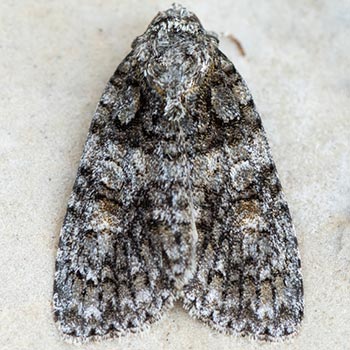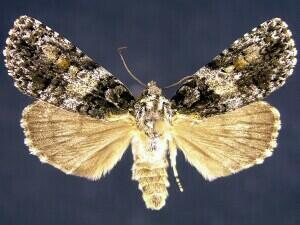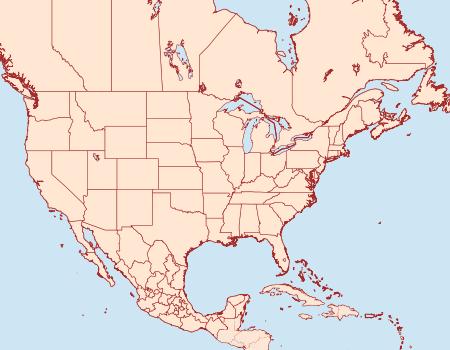Noctuidae
931419.88 –
9249.1 Acronicta cryptica
Schmidt & Anweiler, 2020
|
|
|
| Photographs are the copyrighted property of each photographer listed. Contact individual photographers for permission to use for any purpose. |

© David Kaposi
|
| Distribution: |
Southern ON, Canada; MI, IL, KY, eastern TN, USA in sandy woodland habitat with Quercus velutina (Black Oak). |
Larva and
Host Plants: |
Quercus spp. but has been recorded only in areas with Quercus velutina (Black Oak). |
| Similar Species: |
- 9249 Acronicta increta is usually paler overall with more contrast between the dark antemedial and paler medial area; subterminal row of pale chevrons usually more distinct; hindwing usually paler. Melanistic specimens cannot be separated with confidence and require DNA.
- Pinned specimens of related species. (Hint: select View by Region on the related species page.)
|
| Synonymy: |
cryptica Schmidt & Anweiler, 2020 (Acronicta)
Type locality: Rowan Mills area, Norfolk Co., Ontario, Canada. |
| Taxonomic Notes: |
Acronicta cryptica Schmidt & Anweiler, 2020, n. sp., MONA Fascicle 25.4: 150. Some past records of A. increta and A. inclara, n. syn. of A. increta, refer to this species. |
|
| References |
- Barcode of Life (BOLD) - Caution: DNA barcode provides evidence of relatedness, not proof of identification, and some BOLD specimens shown may not be sequenced.
- Barcode of Life (BOLD) - BIN: BOLD:ACE9903 - Caution: DNA barcode provides evidence of relatedness, not proof of identification.
- Schmidt, B.C. & G.G. Anweiler, 2020. Noctuidae (Part) Pantheinae, Raphiinae, Balsinae, Acronictinae. The Moths of North America, Fascicle 25.4: 148; pl. A-9, figs. 1-22 (adult); pl. 19, fig. 4 (♂ gen.); pl. 37, fig. 6 (♀ gen.); pl. L-6, figs. 5-8 (larva) (order).
- Species Page at BugGuide.Net
|

 - LG – © Jim Troubridge

DNA - 34mm - Kalkaska Co., MI – © Jim Vargo
|







 -
-